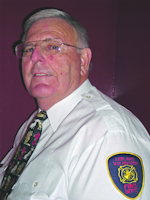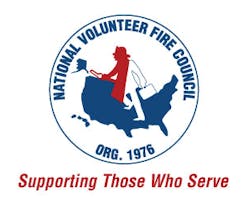National Fire Protection Association (NFPA) standards have a significant impact on the fire service. Documents such as NFPA 1001, Standard for Firefighter Professional Qualifications, NFPA 1403, Standard on Live-Fire Training Evolutions, NFPA 1500, Standard on Occupational Safety and Health, and NFPA 1901, Standard for Automotive Fire Apparatus, are just a few of the many standards that the fire service uses as a basis for training, certification, and the acquiring of equipment.
The National Volunteer Fire Council (NVFC) strongly encourages all members of the fire service to be active in the development and review process for NFPA standards. Standards and codes are a key component of the NVFC’s B.E.S.T. practices for health and safety. The B.E.S.T. practices, which make up the NVFC’s Health and Safety Priorities, cover the four main focus areas of Behavior, Equipment, Standards and Codes and Training (see www.nvfc.org/health_safety).
Many wonder how NFPA standards come into existence or how they are revised. The purpose of this article is to help clarify how standards are written, by whom and how you, the user, can influence what goes into these documents.
Technical committees (TCs) for the various standards are formed consisting of volunteers – individually, representing an organization or having expertise and subject matter knowledge. NFPA balances the committee membership by selecting from various groups, including users, labor, manufacturers, installers, applied research, enforcing authorities, insurance, consumers and special experts. This is to preclude one section from dominating the group. Each TC has an NFPA staff liaison to ensure that the codes and standards development process is followed.
Existing standards are revised approximately every five years. The revision cycle takes about two years and involves a five-step process. Individuals and organizations are encouraged to offer input and can influence the revision during several steps within the cycle. Guiding principles for the NFPA codes and standards-making system include due process, openness and consensus. The following is a brief overview of the five-step process.
• Step 1 – Call for Proposals. A public notice is made approximately two years before the document revision is complete. The public is encouraged to submit proposals to the NFPA Standards Administration. You do not have to be a member of a TC to have your concern heard. The proposal must be on a proposal form available at www.nfpa.org. Proposals can seek to clarify, add or delete components of the standard. Proposals received after the proposal period has closed will be held until the next cycle.
• Step 2 – Report on Proposals (ROP). The submitter of the proposal does not need to be present at the ROP meeting. By process, the TC is required to consider and act on all proposals. Proposals can also be submitted by members of the TC at the ROP meeting.
The TC will review all proposals for merit and discuss the limited options available to the committee. Each proposal is voted on in terms of the actions by the committee: accept, reject, accept in principle, accept in part and accept in principle and in part. With the exception of the committee vote to accept, the TC must substantiate the reason for voting, which will become part of the ROP record. This is a simple-majority vote by members of the committee present that lets the proposal move to a “letter-ballot” (written ballot). It is not necessarily a reflection of the committee to accept the revision at this time. The letter-ballot is sent to all members of the committee after the ROP meeting is completed.
As part of the letter-ballot, TC members are balloted to accept, reject, accept in principle, accept in part or accept in principle and in part. With the exception of the committee vote to accept, the TC member must also substantiate the reason for voting. The actions of the TC and the results of the simple-majority vote and the two-thirds-majority letter-ballot vote are published as part of the ROP and made public on the NFPA website and in print. Anyone submitting a proposal receives a printed copy of the results.
• Step 3 – Report on Comments (ROC). Once the ROP is released, the period for public comment is open. No new proposals can be submitted, but the proposals that were acted on by the TC can be addressed on a comment form and submitted to the TC for review and action. The letter-ballot by the TC does not mean a proposal is complete. The public can request with substantiation the reason for the revision to be revisited. For example, the public may ask that a deleted item be returned to the standard or the public comments may ask for items to be removed. Minor changes in wording for syntax or grammar also are considered.
The TC convenes to review and act on each public comment. Each comment is voted on in terms of the actions by the committee: accept, reject, accept in principle, accept in part and accept in principle and in part. With the exception of the committee vote to accept, the TC must substantiate the reason for voting. This will become part of the ROC record. This vote is a simple-majority vote made by the members of the committee present that lets the item move to a letter-ballot. It is not necessarily a reflection of the committee to accept the revision at this time. The letter-ballot is sent to all members of the committee after the ROC meeting is completed.
As part of the letter-ballot, TC members are balloted to accept, reject, accept in principle, accept in part or accept in principle and in part. With the exception of the committee vote to accept, the TC members must also substantiate the reason for voting.
Before the results of this phase of the cycle are published, the Technical Correlating Committee (TCC) is convened to review and verify that there is no overlap between standards that would cause significant impact to the documents. The TCC then conducts a letter-ballot with a three-quarters majority required vote to accept, reject, accept in principle, accept in part or accept in principle and in part. With the exception of the committee vote to accept, the TCC must also substantiate the reason for voting.
The actions, simple-majority vote and two-thirds-majority letter-ballot vote by the TC, and the actions and letter-ballot vote by the TCC, are all published as part of the ROC and made public on the NFPA website and in print. Anyone submitting a proposal receives a printed copy of the results.
• Step 4 – Technical Committee Reports (TCR) Session. At the NFPA Conference each June, the TCR can be submitted with certified motions, representing another opportunity for a standards document to be revised based on motions presented prior to the convening of the conference. This is accomplished by the submitter filing for a Notice of Intent to Make a Motion (NITMAM) to be submitted to the NFPA. The Motions Committee of the Standards Council reviews and certifies the motion. The motions can only be on the items based on the ROP and ROC. There are limitations as to who can make a motion. The motion is placed on the agenda and anyone can speak to the issue. The vote is made by the NPFA general membership present. Successful motions are then letter-balloted through the respective TCs and TCCs.
• Step 5 – Standards Council Issuance. All the steps previously outlined are documented and written in a way that reflects the concerns of all who participate in the process. From the proposals that are submitted by the individual or organization, the substantiations, the letter-balloting, the publications and the public comments become part of a public document transparent for all to see. Appeals can be made to the Standards Council if someone believes the process was not followed. Once the appeals are heard and acted on, the Standards Council issues the standard. The standard is published with all the revisions and the cycle is complete.
While the process appears to be complex and detailed, it is understood that this process is valid. NFPA codes and standards have saved lives and property. Unfortunately, many times, the fire service does not take advantage of the process until the document is validated and final. When standards affecting you are due for revision, get involved in the process. Write proposals. Suggest changes. Add, delete. Become acutely aware of the timing of both proposals and public comment periods. When the document is released for public comment and the proposal you submitted is rejected, write a comment. This will ensure that the TC has given thoughtful consideration to your suggestion. Additionally, consider volunteering to sit on a Technical Committee.
The fire service should take a more proactive approach to the NFPA codes and standards process. This ensures that your needs and concerns are being considered and, if justified, additions, changes or deletions are made to the documents. Your input has a strong impact on the Technical Committee and the resulting standard. Be part of the process – you do have influence.
KENN FONTENOT is the National Volunteer Fire Council Louisiana director and chair of the NVFC Health and Safety Committee. He is a charter member and first chief of the LeBlanc Volunteer Fire Department. Fontenot is a principal member on the NFPA 1001 committee and alternate member of NFPA 1021. He is the regional fire training coordinator at the Louisiana State University Fire and Emergency Training Institute and past president of the Louisiana State Firemen’s Association. He holds an associate’s degree in fire science.

Kenn Fontenot
KENN FONTENOT is the National Volunteer Fire Council’s Louisiana director and chair of the NVFC Health and Safety Committee. He is also a charter member and first fire chief of the LeBlanc Volunteer Fire Department. Fontenot is a principal member of the NFPA 1001 committee and alternate member of the NFPA 1021 committee. He also is the regional fire training coordinator at the Louisiana State University Fire and Emergency Training Institute and a past president of the Louisiana State Firemen’s Association. He holds an associate’s degree in fire science.






